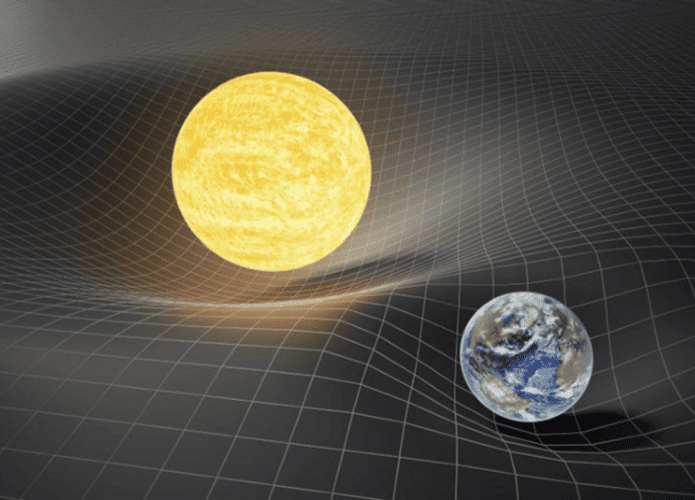In the vast field of theoretical physics, few concepts are as fascinating and fascinating as the fabric of space-time. It's a fundamental idea in Albert Einstein's theory of general relativity, and understanding it is crucial to understanding the nature of the universe and how it works. Let's understand exactly the concept of the space-time fabric, how it was conceived, its properties and its implications for our understanding of the universe.
Read also:
Origins and development of the concept of space-time fabric
To understand the fabric of space-time, we must first go back to the beginnings of modern physics, where the seeds of this concept were planted by visionary minds like Albert Einstein. In the early 20th century, Einstein revolutionized our understanding of the universe with his theory of relativity, which introduced the idea that space and time are intrinsically intertwined, forming a dynamic structure known as the fabric of space-time.
Einstein's theory of general relativity posits that the presence of mass and energy in the universe causes a curvature in the fabric of space-time, as if a sheet were stretched over a bed. This curvature results in a curved path for celestial bodies such as planets and stars because they follow the shortest path in space-time curved by gravity.
Learn about the concept of time and place
The fabric of space-time can be visualized as a three-dimensional grid, where space represents the three spatial dimensions (length, width, and height) and time is represented as an additional dimension, orthogonal to the three spatial dimensions. This union of space and time is crucial to our understanding of the fundamental nature of the universe.
Imagine the fabric of space-time as an elastic, flexible fabric, where massive objects like planets and stars create dips and rises due to the influence of their gravity. These distortions in the structure of the fabric of space-time are responsible for the way celestial bodies interact and move in the universe.
Deep effects
The implications of the space-time fabric concept go beyond simply describing gravity. This cosmic structure is fundamental to our understanding of phenomena such as the expansion of the universe, black holes, gravitational waves, and even the nature of time.
For example, general relativity predicts the existence of black holes, regions of space in which the curvature of the fabric of space-time is so extreme that nothing, not even light, can escape their gravity. These cosmic objects challenge our conventional understanding of physics and represent natural laboratories for exploring the boundaries of the fabric of space-time.
Furthermore, the direct detection of gravitational waves in 2015 once again confirmed the existence of the fabric of space-time. These ripples in the structure of space-time, caused by cataclysmic cosmic events such as the merger of black holes, confirmed Einstein's predictions and opened a new window for investigating the mysteries of the universe.

The fabric of space-time represents one of the most profound and interesting achievements in modern physics. This revolutionary concept of space and time challenges us to rethink our understanding of the universe and our existence in it. From Einstein's visionary theories to the latest discoveries in observational cosmology, this theory continues to inspire and fascinate scientists and ordinary people alike, providing a unique window into the mysteries of the universe.

“Hardcore beer fanatic. Falls down a lot. Professional coffee fan. Music ninja.”






More Stories
The law allows children and adolescents to visit parents in the hospital.
Scientists pave the way for the emergence of a new element in the periodic table | World and Science
Can dengue cause hair loss? Expert explains how the disease affects hair